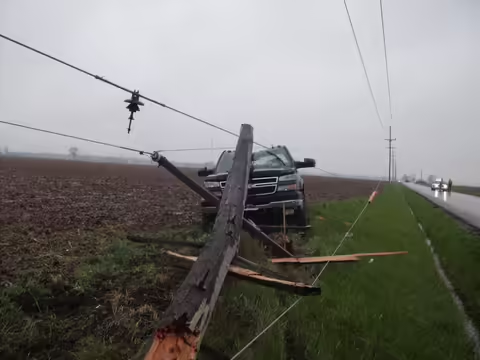SPRINGFIELD, Ill. — Every year, 1,000 people die, and 30,000 people are injured in electrical accidents. While electricity typically transmits without incident, there are times when the electrical path becomes disrupted. When this happens, the current can flow through anything or anyone in its path, causing electrical shock, internal and externals burns, and other serious injuries, including electrocution.
“Electricity is referred to as the silent killer since it is often undetectable, that is, it typically cannot be seen, heard or smelled,” says Erin Hollinshead, executive director of Safe Electricity. “While you might notice some electrical hazards — electrical outlets that are discolored and warm to the touch for example — many others are invisible and imperceptible."
May is Electrical Safety Month. Hollinshead says to err on the side of caution and always respect electricity and the potential danger that comes with it.
While there are precautions people can take inside and outside their homes, many people are less familiar with potential electrical hazards in the great outdoors.
Respect underground utility lines by calling 8-1-1 at least a few days prior to starting a digging project to locate them.
Always be aware of overhead power line locations and never come within 10 feet of a line while trimming trees or carrying a long object such as an extension ladder, pool skimming pole or any other far-reaching tool,” Hollinshead says.
A power line does not have to be sparking, giving off a flame, buzzing or hissing to be live. It can look harmless and still be energized.
“If you see an overhead power line that is sagging or down, always assume it is live and never go near one,” Hollinshead says.
Safe Electricity offers the following safety reminders for power lines, at home and at the scene of an accident:
Power line safety
- Always assume a power line is energized and deadly.
- Never go near an overhead power line, including one that is sagging or on the ground.
- If the electrical path is broken due to a damaged overhead or underground line, electrical current can travel through the ground and electrify nearby objects, such as a vehicle, a metal fence, a shovel or other equipment or a person.
- Use the same safety precautions around a damaged or dislodged padmount transformer (“green box”) or any other malfunctioning electrical equipment/source.
At the scene of an accident
- If you are in a car, tractor cab or any type of machinery that is in contact with or is near a power line, staying inside is usually the safest place to be. Stay where you are, call 9-1-1, and wait for the electric utility to arrive and deenergize the power before getting out.
- If you must exit a vehicle or cab due to smoke or fire, there is a recommended method that can help avoid electrocution. Before jumping out, maintain a solid stance and cross your arms across your chest to avoid touching the car or cab while exiting. Make a solid jump to the ground with your feet together. Then, while keeping your feet together, make solid hops as far as you can go.
- If you see someone in trouble who could be exposed to electrical current, do not go toward the scene to help. Instead, call 9-1-1, and warn others not to approach the area.
In your yard
- Always look up and look out when using a long pole, extended tool or ladder. Always carry long items horizontally.
- Do not trim trees or limbs that come within 10 feet of a power line.
- Be careful when you are elevated: on your roof, on a hydraulic or scissor lift or high atop a ladder. Always have 10 feet between you and a power line at all times.
- Before digging in your yard, always call 8-1-1 or your state’s underground utility marking service two to three days prior to digging.
While at play
- If anything gets caught in a power line, such as a drone or kite, never try to retrieve it yourself. Call your local electric utility for assistance.
- Teach kids to never climb trees with power lines running above or through them. Also teach them not to sit or play on a padmount transformer/green box.
Watch a 30-second video about power line safety. For more information about electrical safety, visit SafeElectricity.org.
SOURCE: Erin Hollinshead, Executive Director, Safe Electricity
WRITER: Ann Augspurger, Communications Director, Safe Electricity
ABOUT EXTENSION: Illinois Extension leads public outreach for University of Illinois by translating research into action plans that allow Illinois families, businesses, and community leaders to solve problems, make informed decisions, and adapt to changes and opportunities.
Safe Electricity is the award-winning, public awareness program of the Energy Education Council, a 501(c) 3 established in 1952 on the campus of the University of Illinois at Urbana-Champaign. With offices located in Springfield, Ill., Safe Electricity operates under the University of Illinois Extension and is led by the EEC Board of Directors. Since the Safe Electricity program was created in 2001, it has provided thousands of safety-minded resources to its more than 500 utility members from across the country to help save lives and reduce injuries.

